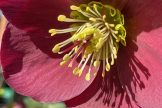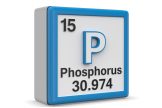
 Important note about plant availability. Important note about plant availability.There are hundreds of factsheets on our website provided for your information. Not all plants will be available at all times throughout the year. To confirm availability please call (03) 8850 3030 and ask for the nursery. |
Carnivorous plants have evolved in areas of high rainfall and constantly leached soils. Due to the low nutrient content of these soils, these plants obtain the nutrients they require for growth by trapping and digesting insects. This is a fascinating process to observe, and if you follow a few simple steps, your fly trap or wasp catcher will thrive.
Venus Fly Traps (Dionaea muscipula)
Venus Fly Traps have a specially modified leaf… like a jaw with several small hairs inside. When a fly walks over the hairs and touches them twice, the jaw shuts. As the fly struggles inside to get out, the jaw shuts tighter. The plant then starts the digestive process. Digesting a housefly takes roughly one week. When the fly has been digested, the leaf will either re-open or die. If the jaw shuts when there is no fly inside, then the jaw will take one or two days to re–open.
Growing Venus Fly Traps
The best position for a Venus Fly Trap is on a window sill, or outside in a terrarium. They need from full sunlight to 50% shade, but no more. If the leaves become long and thin with small traps at the ends, then your trap probably isn’t getting enough light. Choose a window sill that gets at least five hours of direct sunlight every day. Venus Fly Traps need plenty of water, especially in spring and summer. Sit the pot in a saucer of water 3 – 4cm deep. The best water to use is rainwater, as tap water contains salts and chemicals that build up in the peat mix and may harm the plant. In winter, you may let the plants dry out a bit. This means water occasionally, when the weather cools down. The Plants will become smaller and some leaves will die off. This means the plant is dormant or resting until the weather heats up in spring. As the weather gets warmer, you need to increase the watering and the plant will grow new leaves.
Venus Fly Traps are not grown in soil or potting mix. Instead they use peat moss or sphagnum moss with a little sharp sand added. Venus Fly Traps are very sensitive to salts and minerals, which accumulate in the peat moss. If you are using tap water, the plants will have to be re – potted each year. Most important of all, do not use fertiliser on your Venus Fly Trap and don’t put anything in the traps, including dead flies! You need to let the plant attract and trap the flies. If your Fly Trap starts to flower, cut these off, so that more energy is put into growing more leaves.
Pitcher Plants (Sarracenia)
These plants also trap insects inside modified leaves. The leaves are shaped like a pitcher, with a pool of liquid at the bottom. The insects are attracted to the pitchers by nectar, which is secreted by glands near the top of the pitcher. The insects start to crawl down the pitcher over hairs inside the pitcher which point downwards. The insect continues to move down the pitcher until it falls down into the pool of liquid at the bottom. The liquid contains enzymes and bacteria, which digest the insect.
Growing Pitcher Plants
These need the same conditions as Venus Fly Traps, but they need to dry out in winter. During winter the tops of the pitchers will brown off. Cut of the brown parts of the pitcher, but leave the green part until new flowers and pitchers are produced in spring.




